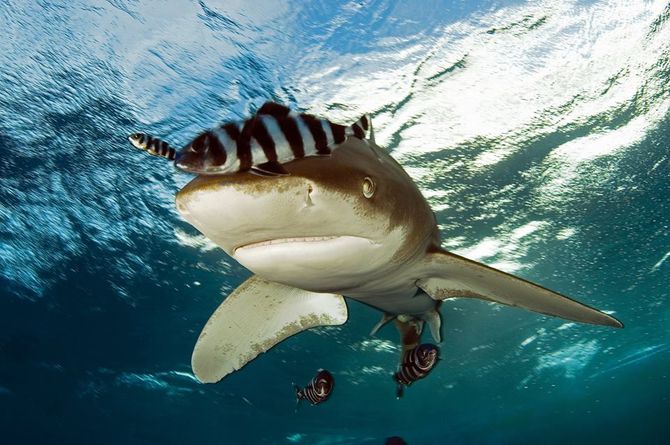Amazing creatures – Sharks – Part 2
To continue what we started last month, talking about sharks. As discussed previously, most sharks are aggressive by nature. However, out of the 440 recorded shark species only four have been linked to fatal human attacks: the great white shark, the bull shark, the oceanic white-tip shark, and the tiger shark, with the last two having a presence in the Red Sea. These are large and strong predators that attack to kill. Remarkably all these four shark species including the ones from the Red Sea have been filmed and photographed by many divers without the use of a cage. Against some common beliefs, this supports the theory that humans are not part of the sharks’ menu and that previous shark attacks on humans might be related to other factors. However, more research is required concerning this issue, so caution is still needed when approaching any shark. In a typical marine food pyramid, the number of consumers decreases the higher you go up the pyramid. Being the top predators, sharks are already small in numbers compared to other fish species. With an estimated number of more than 100 million sharks killed by humans every year, sharks are threatened by extinction. The absence of top predators from a food web is an environmental catastrophe and causes a major imbalance in the ecosystem. Shark products including meat, skin, jaws and shark liver are considered delicacies and used for human consumption around the globe. However, most sharks are killed for their fins, with shark fin soup known as a cultural symbol and aphrodisiac around the world. Fishermen catch sharks, cut off their fins and dump the finless animals back into the water. Not able to swim or breathe (sediments are coming in through its gills) the finned shark will eventually die. With an estimated black market industry of $300 billion in 2009, shark fining represents the biggest threat to shark conservation efforts. In the Red Sea organizations including HEPCA, PERSGA, and EEAA have taken initiatives to conserve sharks, lobbying successfully for environmental laws to protect them. Next month we will continue talking about sharks, and we will ask the main question why do we really need to conserve them?



